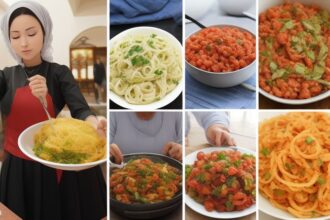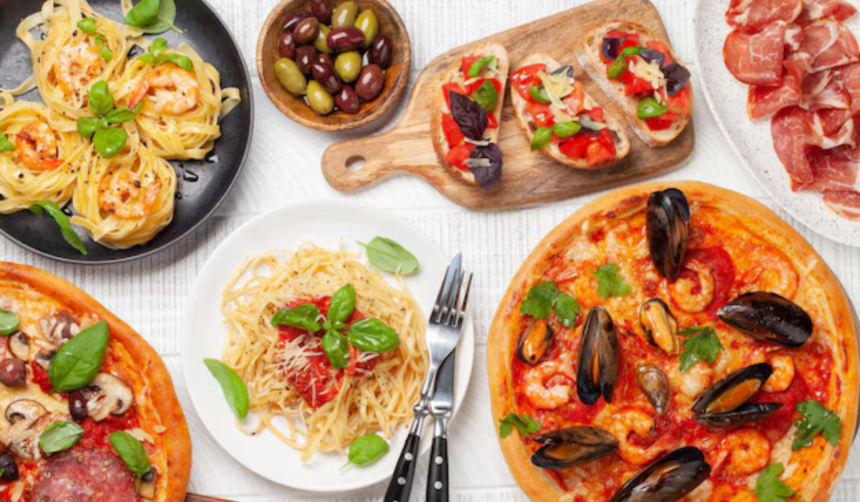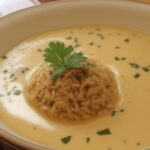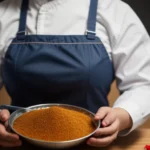From Pasta to Pizza: A Culinary Journey Through Italy
Italy is known for its rich culinary tradition, with a variety of regional dishes that reflect the diverse landscapes and cultures found throughout the country. From the rolling hills of Tuscany to the coastal regions of Sicily, Italian cuisine is as diverse as it is delicious. In this article, we will take you on a culinary journey through Italy, exploring the various dishes and ingredients that make this country a food lover’s paradise.
1. Introduction to Italian Cuisine
Italian cuisine is characterized by its use of fresh, seasonal ingredients prepared in simple yet flavorful ways. From pasta to pizza, Italian dishes are known for their bold flavors and hearty portions. The use of olive oil, garlic, and herbs like basil and oregano are staples in Italian cooking, lending a unique taste to each dish.
2. The Birth of Pasta
One of Italy’s most well-known exports, pasta has a long history that dates back to ancient times. While the exact origins of pasta are debated, it is generally believed to have been introduced to Italy by the Arabs during the Middle Ages. Pasta quickly became a staple in Italian cuisine, with a wide variety of shapes and styles available to suit every taste.
3. Classic Pasta Dishes
From creamy carbonara to hearty bolognese, Italian pasta dishes are beloved around the world for their rich flavors and comforting textures. Each region of Italy has its own unique pasta dishes, such as the seafood-laden spaghetti alle vongole of Venice or the spicy arrabbiata of Rome.
4. The Art of Pizza Making
Pizza is another Italian favorite that has gained worldwide popularity. Originating in Naples, pizza is traditionally topped with tomato sauce, mozzarella cheese, and a variety of toppings such as pepperoni, mushrooms, and olives. The art of pizza making is taken very seriously in Italy, with strict guidelines governing the ingredients and techniques used to create the perfect pie.
5. Regional Pizza Variations
While the classic margherita pizza remains a favorite, there are countless regional variations of pizza found throughout Italy. From the seafood-laden pizza ai frutti di mare of Sicily to the unique salsiccia e friarielli of Naples, each region puts its own twist on this beloved dish.
6. The Importance of Fresh Ingredients
One of the key factors that sets Italian cuisine apart is its emphasis on fresh, locally-sourced ingredients. From ripe tomatoes to fragrant herbs, Italian chefs rely on high-quality produce to create dishes that are bursting with flavor. Visiting local markets and eateries is a great way to experience the diversity of Italian ingredients.

7. Traditional Cooking Techniques
Italian cooking is rooted in tradition, with many dishes prepared using time-honored techniques that have been passed down through generations. From slow-simmered sauces to hand-rolled pasta, Italian chefs take great pride in the craftsmanship of their dishes. Learning these techniques can help you create authentic Italian cuisine at home.
8. Slow Food Movement
Italy is home to the Slow Food movement, which promotes the use of sustainable, locally-sourced ingredients in order to preserve traditional culinary practices. Slow Food advocates for the protection of regional specialties and the promotion of small-scale farmers and producers. By supporting the Slow Food movement, you can help preserve Italy’s rich culinary heritage.
9. Wine and Cheese Pairings
No Italian meal is complete without a glass of wine and a selection of cheese. Italy is known for its diverse wine regions, producing a wide range of varietals that pair beautifully with local dishes. From the bold red wines of Tuscany to the crisp whites of Sicily, there is a wine for every palate. Be sure to also try the wide variety of Italian cheeses, such as Parmigiano-Reggiano, Gorgonzola, and Pecorino Romano.
10. Sweet Treats and Desserts
Italian desserts are a decadent way to end a meal, with classics like tiramisu, cannoli, and gelato satisfying any sweet tooth. Many Italian desserts are made with simple ingredients like eggs, sugar, and flour, allowing the natural flavors to shine through. Each region of Italy has its own unique dessert specialties, so be sure to sample a variety during your culinary journey.
11. Cooking Classes and Culinary Tours
For those looking to immerse themselves in Italian cuisine, cooking classes and culinary tours are a great way to learn from local experts and explore the country’s food culture. Whether you’re rolling out pasta dough in Tuscany or sampling olive oil in Umbria, these hands-on experiences can deepen your appreciation for Italian cuisine.
12. Michelin-Starred Dining
Italy is home to a number of Michelin-starred restaurants, where some of the world’s best chefs create innovative and delicious dishes that push the boundaries of traditional Italian cooking. From fine dining establishments in Rome to charming trattorias in Florence, there are endless opportunities to indulge in gourmet cuisine while exploring Italy’s culinary landscape.
13. Street Food and Food Festivals
Italian street food is a delicious way to experience the country’s culinary offerings on the go. From savory arancini in Sicily to sweet cannoli in Calabria, street food vendors across Italy serve up tasty treats that showcase the country’s diverse flavors. Be sure to also attend local food festivals, where you can sample regional specialties and mingle with fellow food enthusiasts.
14. The Future of Italian Cuisine
As Italian cuisine continues to evolve, chefs are experimenting with new techniques and ingredients while staying true to the traditions that have made this cuisine so beloved. From innovative takes on classic dishes to fusion cuisine that blends Italian flavors with global influences, the future of Italian cuisine is bright and exciting.
15. Conclusion
From pasta to pizza, Italy’s culinary journey is a feast for the senses. By exploring the diverse dishes, ingredients, and traditions that make up Italian cuisine, you can gain a deeper appreciation for the country’s rich food culture. So pack your bags and prepare your taste buds for a culinary adventure through Italy. Buon appetito!
FAQs about “From Pasta to Pizza: A Culinary Journey Through Italy”
- What can I expect from “From Pasta to Pizza: A Culinary Journey Through Italy”? “From Pasta to Pizza” takes you on a delightful culinary journey through Italy, exploring the rich diversity of Italian cuisine. From the hearty pasta dishes of Emilia-Romagna to the wood-fired pizzas of Naples, this journey offers a taste of Italy’s most iconic and beloved dishes, along with insights into the cultural and regional influences that shape them.
- What makes Italian cuisine so unique and appealing to food enthusiasts worldwide? Italian cuisine is renowned for its simplicity, emphasis on fresh, high-quality ingredients, and regional diversity. Whether it’s the rich flavors of a hearty ragù alla bolognese or the delicate simplicity of a Margherita pizza, Italian cuisine captures the essence of Mediterranean cooking and has captivated food enthusiasts around the globe.
- Are there vegetarian or vegan options included in “From Pasta to Pizza”? Absolutely! “From Pasta to Pizza” celebrates the diversity of Italian cuisine, including a variety of vegetarian and vegan options. From classic pasta dishes like spaghetti aglio e olio to vegetable-laden pizzas topped with fresh herbs and seasonal produce, there’s something to delight every palate, regardless of dietary preferences.
- How can I recreate the dishes featured in “From Pasta to Pizza” at home? Recreating the dishes featured in “From Pasta to Pizza” at home is both achievable and rewarding. The book provides detailed recipes, cooking techniques, and tips to help you master Italian cooking in your own kitchen. From homemade pasta dough to perfecting the art of pizza-making, you’ll find everything you need to bring the flavors of Italy into your home.
- What cultural insights and regional influences can I expect to discover in “From Pasta to Pizza”? “From Pasta to Pizza” goes beyond just recipes, offering insights into the cultural and regional influences that shape Italian cuisine. Learn about the history of iconic dishes, the significance of food in Italian culture, and the diverse culinary traditions that vary from region to region. Whether it’s the seafood-focused cuisine of the Amalfi Coast or the hearty mountain fare of the Italian Alps, this culinary journey celebrates the rich tapestry of Italian gastronomy.
Advantages:
- Familiarity: The mention of pasta and pizza, two iconic Italian dishes, in the title instantly captures the attention of readers and promises a journey through well-known aspects of Italian cuisine.
- Accessibility: Pasta and pizza are widely loved and enjoyed around the world, making the content of the book relatable and appealing to a broad audience.
- Culinary education: The title suggests that the book will provide insights into the origins, variations, and preparation methods of pasta and pizza, offering readers an opportunity to deepen their understanding of these dishes.
- Gastronomic adventure: While focusing on pasta and pizza, the title hints at a culinary journey through Italy, encouraging readers to explore other aspects of Italian cuisine beyond these two staples.
- Inspiration for cooking: Pasta and pizza are popular dishes for home cooking, and the title may inspire readers to try their hand at making authentic Italian versions of these dishes.
Disadvantages:
- Narrow focus: By centering on pasta and pizza, the title may limit the scope of the book, potentially overlooking other equally rich and diverse aspects of Italian cuisine.
- Oversaturation: Pasta and pizza are already well-covered topics in the culinary world, and readers may feel that the book offers nothing new or unique beyond what is already widely available.
- Cultural oversimplification: Focusing primarily on pasta and pizza could perpetuate stereotypes about Italian cuisine, neglecting the depth and complexity of regional variations and lesser-known dishes.
- Missed opportunities: By fixating on the most popular Italian dishes, the book may miss opportunities to introduce readers to lesser-known but equally delicious aspects of Italian culinary culture.
- Dietary limitations: Pasta and pizza are often associated with carbohydrates and may not be suitable for individuals with dietary restrictions or preferences, potentially excluding some readers from fully engaging with the content.
















